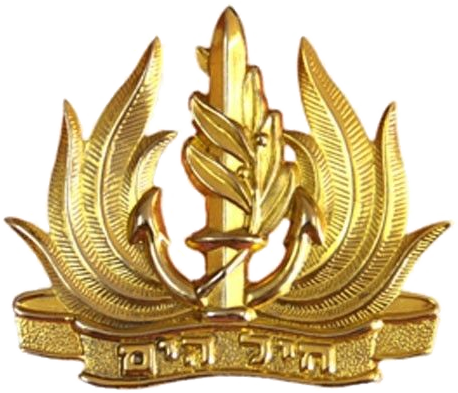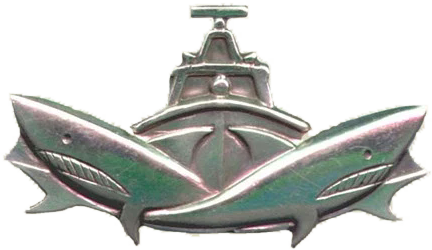Trump’s strategic vision, Israel National News, Ted Belman, December 2, 2017
Former Minister of Defense for Israel, Moshe Yaalon, just wrote a major opinion piece titled United States Policy in the Middle East: The Need for a Grand Strategy, which was published by the Institute for National Security Studies. In it, he claimed:
“The first year of the Trump administration has been characterized by the lack of clear policy guidelines vis-à-vis the Middle East. The great hopes that many countries in the region hung on the change of administration and a new proactive president in the White House have slowly been eclipsed by a sense of confusion, given United States behavior that shows little consistency and no clear strategic objectives.”
Yaalon, who has been out of office now for two years doesn’t know what is going on. On the contrary, the Trump administration does have a grand strategy, grander than imagined.
Many countries in the region, including Israel, Saudi Arabia and Egypt have never been more hopeful about what they understand to be his strategic objectives and his plans for achieving them.
Remember Trump has consistently refused to telegraph his foreign policy moves while at the same time has consistently repeated that he intends to push back against Iran expansionism.
Rather than focus on the negative, as Israeli-American Caroline Glick did in her article
America the Laughing Stock, let’s look at what a difference Trump has made already.
Saudi Arabia
When President Trump was campaigning, he kept saying that he wanted to defeat ISIS and its ideology. He was ridiculed for thinking he could eradicate the ideology. It didn’t take him long to make good on his word.
His administration got to work immediately with the Sunni states, but principally with Mohamed ben Salman (MBS) of Saudi Arabia. Al Sisi of Egypt was already on board as evidenced by a speech he made two years ago in which he said:
“I am addressing the religious scholars and clerics. We must take a long, hard look at the situation we are in. It is inconceivable that the ideology we sanctify should make our entire nation a source of concern, danger, killing, and destruction all over the world. It is inconceivable that this ideology… I am referring not to ‘religion,’ but to ‘ideology’– the body of ideas and texts that we have sanctified in the course of centuries, to the point that challenging them has become very difficult.
“It has reached the point that [this ideology] is hostile to the entire world. Is it conceivable that 1.6 billion [Muslims] would kill the world’s population of seven billion, so that they could live [on their own] [..]. You cannot see things clearly when you are locked [in this ideology]. You must emerge from it and look from outside, in order to get closer to a truly enlightened ideology. You must oppose it with resolve. Let me say it again: We need to revolutionize our religion.”
Four months after his inauguration, Pres Trump made his historic trip to Riyadh, Saudi Arabia in which he addressed 50 Arab and Muslim leaders:
“Later today, we will make history again with the opening of a new Global Center for Combatting Extremist Ideology – located right here, in this central part of the Islamic world. This groundbreaking new center represents a clear declaration that Muslim-majority countries must take the lead in combatting radicalization”
“But above all we must be united in pursuing the one goal that transcends every other consideration. That goal is to meet history’s great test — to conquer extremism and vanquish the forces of terrorism.
“Young Muslim boys and girls should be able to grow up free from fear, safe from violence, and innocent of hatred.”
His message was clear and had already been agreed upon.
“Yesterday, we signed historic agreements with the Kingdom that will invest almost $400 billion in our two countries and create many thousands of jobs in America and Saudi Arabia.“This landmark agreement includes the announcement of a $110 billion Saudi-funded defense purchase – and we will be sure to help our Saudi friends to get a good deal from our great American defense companies. This agreement will help the Saudi military to take a greater role in security operations.”
The last sentence suggests that the fighting will be done by the Sunnis with American backing rather than the other way around.
“But this (prosperous) future can only be achieved through defeating terrorism and the ideology that drives it.”
The Arab world understands this and is all for it. With the price of oil being what it is and likely to stay low, the Saudis will be bankrupt in a 5 years as they are eating into their surplus of $750 billion at an alarming rate. By jointly agreeing to spend $400 billion to achieve prosperity, they are putting their money where their mouth is. They are committed and so is the US.
As further evidence of their commitment, MBS announced the Vision 2030.
Essentially this is an economic vision that requires Saudi Arabia to open up to the world to create an environment conducive to foreign investment. Thus, it must westernize.
“Our Vision is a strong, thriving, and stable Saudi Arabia that provides opportunity for all. Our Vision is a tolerant country with Islam as its constitution and moderation as its method. We will welcome qualified individuals from all over the world and will respect those who have come to join our journey and our success.”
They cannot do this without Israel and they realize it. And Trump is insisting on normalized relations.
They also can’t take on Iran without Israel.
Egypt is in a worse position. She needs Israel’s help in building her economy and in defeating the terrorists in Sinai and Libya.
Saudi Arabia, United Arab Emirates, Bahrain, and Egypt cut off diplomatic relations with Qatar in June 2017. The severing of relations included withdrawing ambassadors, and imposing trade and travel bans.
The crisis is an escalation of the Qatar–Saudi Arabia proxy conflict. The Saudi-led coalition cited Qatar’s support for terrorism and open alliance with the Muslim Brotherhood (MB) as the main reasons for their actions. Saudi Arabia and other countries have criticized Al Jazeeraand Qatar’s relations with Iran.
Qatar is a big supporter of the Muslim Brotherhood (MB) and Hamas, whereas Saudi Arabia, Egypt and the others have banned the MB as a terrorist organization and are coming down hard on Hamas.
In October 2017, Saudi Arabia announced plans to build a $500 Billion city to be called Neom in the north west corner of Saudi Arabia. It will reach into Jordan and Egypt.
Bloomberg reported:
“It would be a microcosm of Saudi Arabia 2.0 while its new 32-year-old leader reconfigures the rest of the economy to make it fit for the modern world in a way that past rulers have failed to do. Other massive cities in the desert have been announced with much fanfare, then have floundered short of expectations, like the $10 billion office park on the outskirts of Riyadh sitting largely unoccupied and unfinished.
“The city “constitutes an attempt to create an economic zone that is more efficient and streamlined than the overall economy that will take time to reform,” said James Dorsey, a Middle East specialist at Singapore’s Nanyang Technological University. “The question is whether one can isolate a megacity from the inefficiencies of the country’s economy.””
As you can see, it is a huge gamble, born no doubt out of the huge need to to transform Saudi Arabia.
Jordan
Jordan too is a supporter of the MB, who have their headquarters in the country. While King Abdullah has enjoyed a good reputation among Congressmen and Members of Knesset, his reputation has been greatly tarnished in the last two years, so much so that the White House and the Netanyahu government are ready to ditch him.
What may have been the straw that broke the camel’s back for them is the fact that Jordan’s king very own security agencies, which he controls with an iron-fist, have been caught red-handed stealing US and British weapons and selling them to ISIS.
Here are some recent articles which tell the tale.
Another Jordanian-made knife in the back of Israel.
Israel-Jordan peace agreement: The emperor has no clothes
They see King Abdullah as an obstacle to peace rather than a guarantor of peace. They also believe that civil war is coming to Jordan unless they make a move to prevent it. While they may not say so publicly, some Israeli journalists do.
The US made their first move this week by announcing:
“Now, according to Stars and Stripes, Congress has added $143 million to the Pentagon budget, to upgrade the strategic Muwaffaq Salti Air Base, close to Jordan’s border with Syria and Iraq. The base has played a key role in the US military in its war with ISIS, and requires urgent upgrades, according to the Air Force, being overwhelmed as it is by the increased numbers and scope of operations.”
This is just the first step in moving the base in Qatar with its 11,000 US airmen to the base in Jordan.
General Charles Wald, USAIR, told Fox News US doesn’t need Qatar air base if Qatar won’t support our fight against terrorism .
This has been done to forestall a civil war in Jordan. The King has lost control of Jordan and the US is calling the shots. Watch for the drama to unfold.
The Arab/Israeli Conflict.
The right in Israel are very unhappy that Trump won’t move the Embassy to Jerusalem, won’t let Israel build though out Judea and Samaria, won’t let her expand the boundaries of Jerusalem and won’t let her demolish illegally build Arab structures. They are also unhappy that Trump keeps working on a plan, a process, for achieving “peace”.
But as the Economist pointed out in a recent article, Whatever the administration produces, Saudi Arabia is likely to support it.
“For Prince Muhammad, it seems, Palestinian aspirations to statehood are less important than countering Iran.”
“Prince Muhammad may calculate that a viable peace process would give him political cover to make the alliance more overt.”
And one might conclude that that is what the purpose of the process is.
Lebanon
Prime Minister Saad Harari resigned his post in Lebanon and then travelled to Saudi Arabia where he made a speech denouncing Hezbollah. On returning to Lebanon, he withdrew his resignation. But all is not lost.
BESA reports, “Hariri is believed to be demanding that Hezbollah halt its support to Houthi rebels in Yemen and withdraw from Syria, where its fighters supported the regime of President Bashar al-Assad. “ and argues that this goal may yet be achieved.
Iraq Kurdistan
The US reprimanded them for holding the referendum against its wishes and allowed Iraq to take back Kirkuk. Do not fear for the independence of Kurdistan. Their day will come. America has a strategic plan which mandates dealing with Jordan first.
The US wants to cement the alliance of Israel, Saudi Arabia and Egypt before pushing back on Iran.
Syria Kurdistan
According to the Washington Post, no friend of Pres Trump, The U.S. must prepare for Iran’s next move in Syria
“A task force of senior former U.S. diplomatic and military officials has come up with suggestions for how Trump could prevent Iran from taking over what’s left of liberated Syria and fulfill his own promise to contain Iranian influence in the region”.
“First, the United States needs to declare a clear Syria policy that removes suspicions that the United States is going to pull up stakes now that the Islamic State caliphate has fallen. The policy should make clear that a U.S. military presence will remain on the ground and in the air, to ensure that the Islamic State doesn’t reemerge and Assad doesn’t retake the entire country, and to provide security for reconstruction.
“Second, the Trump administration must increase its assistance to Sunni communities lucky enough to live outside Assad’s rule and help U.S.-supported local groups hold valuable territory in Syria’s southeast. This territory can provide local communities economic benefits now and political leverage down the line.
“Third, the United States should work with regional allies to stop Iran from moving weapons and troops into Syria. That would require interdicting shipments by sea and ensuring that U.S.-supported forces control key border towns in Syria and Iraq. Such moves could check Iranian aggression without triggering armed conflict with Tehran.”
“Accordingly, Defense Secretary Jim Mattis pledged last week that U.S. forces would remain to prevent the emergence of “ISIS 2.0” and until the political process gets off the ground, but he stopped short of saying America would keep Iran’s aggression at bay.”
As Caroline Glick rightly points out, in Portents of Quagmires in Syria, recently published:
“If Trump keeps US forces in Syrian Kurdistan, and if he refuses to help pay for Syrian reconstruction so long as Assad remains in power and Iranian and Hezbollah forces remain on the ground and if the US ends its civilian and military assistance to Lebanon, the US and its allies will be strengthened, and Russia and its allies will be weakened.
“If the Americans do not interfere as Syrian “freedom fighters” defend against Iranian or Russian “aggression,” it won’t matter what terms the Iranians give Putin for gas, or oil or nuclear deals. He will seek a way out of Syria.“
And she concludes:
“If the Americans do not save them, the situation on the ground augers quagmire, not triumph, for their axis and for their separate regimes.”
So rather than United States behavior showing “little consistency and no clear strategic objectives” as Yaalon writes, I would argue that Trump, does indeed, have a strategic vision. That vision involves the US fostering an open alliance of Saudi Arabia, Egypt, Jordan and Israel so that they can do the heavy lifting in pushing back Iran and its allies and ultimately to prevent Iran from getting the bomb.











Recent Comments